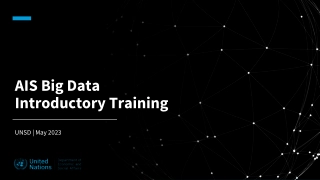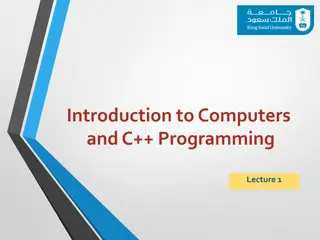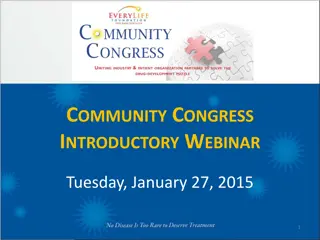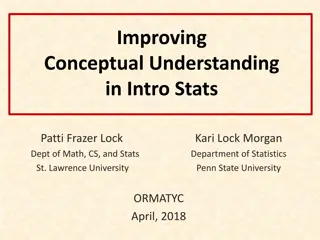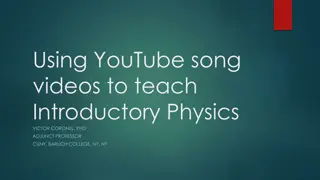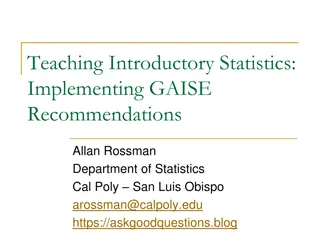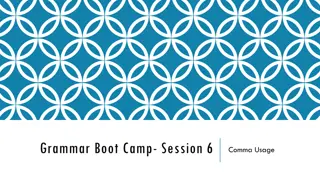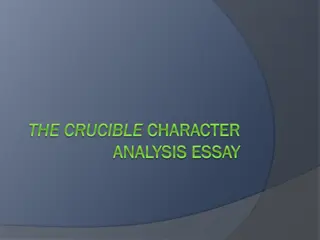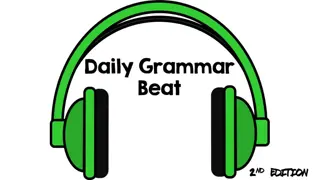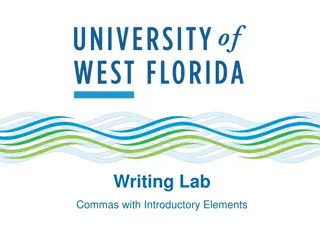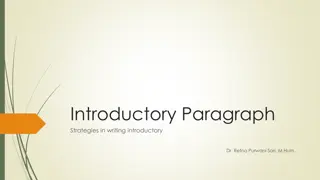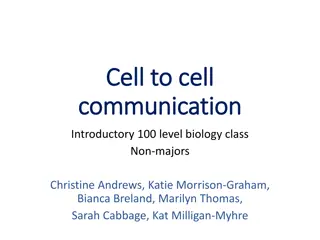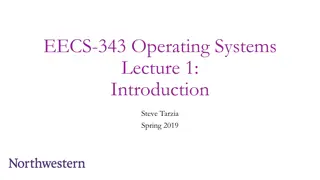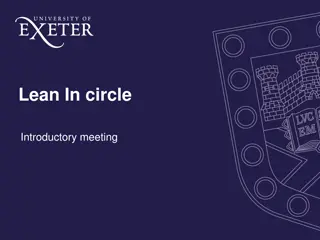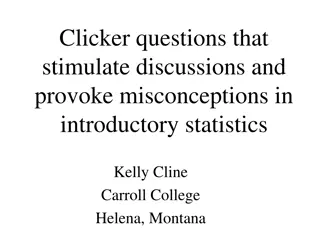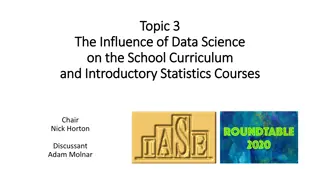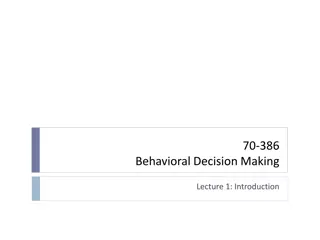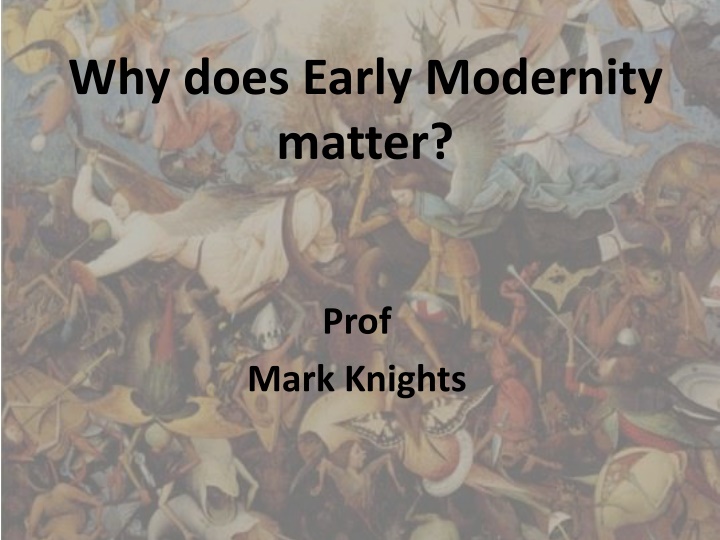
Early Modernity: A Critical Exploration
Delve into the significance of Early Modernity from 1500-1750, examining historical debates, theoretical innovations, and the impact of social, cultural, and religious shifts. Explore the complexities of this period and the evolution of historical perspectives.
Download Presentation

Please find below an Image/Link to download the presentation.
The content on the website is provided AS IS for your information and personal use only. It may not be sold, licensed, or shared on other websites without obtaining consent from the author. If you encounter any issues during the download, it is possible that the publisher has removed the file from their server.
You are allowed to download the files provided on this website for personal or commercial use, subject to the condition that they are used lawfully. All files are the property of their respective owners.
The content on the website is provided AS IS for your information and personal use only. It may not be sold, licensed, or shared on other websites without obtaining consent from the author.
E N D
Presentation Transcript
Why does Early Modernity matter? Prof Mark Knights
Why study 1500-1750?! Change and Continuity as the historian s key concerns Modernisation and some very modern things were being thought out (early Enlightenment) Some things endured or changed very slowly requiring historical imagination; unlocking what might have been alternative pasts
A period of debate and theoretical innovation Clashes of interpretation and approach; a testing ground history as a social science (the Annales school) New social history (history from below) Microhistory and thick description Postmodernism - social and cultural constructions Year 3 s Historiography module
Historical tides Religion as a resurgent force Intolerance and tolerance of different beliefs and cultures anxieties
Historical resonances What is Europe? Boundaries Identity Communication The importance of the long view
Early Modernity what does it mean? Jack A. Goldstone calls it a wholly meaningless term Randolph Starn, the early modern muddle Are labels useful or should the historian try to avoid them? Is the term widely recognised outside of academia? Arcimboldo, 1566
early modernity as a category First used in England in 1869 by William Johnson, more famous as the author of the Eton Boating Song, who gave a lecture in Cambridge called Early Modern Europe . First used in America in 1941. Gained currency in the 1970s. Peter Burke, Popular Culture in Early Modern Europe (1972) and Economy and Society in Early Modern Europe (1978); Natalie Zemon Davis, Society and Culture in Early Modern France (1975). The term became widely used. Why?
An alternative to problematic terms Renaissance which often had more elitist or literary/artistic connotations and which was seldom used in some European countries (England, Germany, France). Reformation It appealed to those interested in society, economy and popular culture who sought to escape the confines of monarchical reigns or national events It describes a period between medieval and modern, and is a response to problems of periodisation but the problems persist
Early Modernity as a period of transition? (displacing the Middle Ages as a period of transformation) From feudalism to capitalism? From hand crafts to mechanised industrial revolution? From religious uniformity to secularism and freedom of worship? From dark ages to scientific rational age? From decentralised kingdom to centralised nation state and empire? From restricted, elite dominated politics to notions of natural rights, freedom, equality and popular politics?
ESTC = English Short Title Catalogue, a catalogue of everything known to have been printed
What are its Start and End Points? William Johnson s 1869 lecture covered the sixteenth century The first text book to use early modern was G.N.Clark sEarly Modern Europe from about 1450 to about 1720 (1957) not very sure! Herbert Rowen sHistory of Early Modern Europe 1500- 1815 (1960) took the story to 1800 [Kumin et al does so too, though this course ends c. 1750!] Eugene Rice, Foundations of Early Modern Europe 1460-1559 (1970) Lots of English early modern focused on 1580-1640 1700? 1750? The 7 Years War and global conflict. 1789?
Geography: Was there an Early Modern World? Each European national history has different trajectories Britain s seventeenth century civil wars; France s 1789 revolution; Spain s golden age in the C16th; The Dutch in the C17th; Russia and eastern Europe in the C18th? Colonial histories are different again British America lasted until 1776 and few scholars talk about early modern America
Picture looks different again from perspective of non- western empires: 1500-1850 does coincide with Spanish and Portuguese domination of Latin America but what about China, Ottoman, Russia India, Japan? 1500 is a meaningless starting point for China where the Manchus dominated 1644- 1911. Key turning point of Ottoman empire is conquest of Constantinople in 1453 and end of Ottoman rule was 1923. Russia did not abolish serfdom until 1861 and arguably remained pre-modern until 1917. Expansion of the Ottoman empire
Practicalities Website: http://www2.warwick.ac.uk/fac/arts/history/undergra duate/modules/hi203/ Beat Kumin (ed.) The European World 1500-1800 (2009) Attend both lectures (team taught) and seminars Assessment: 2 formative essays of 2,000 words each, due by the beginning of week 7 of the first term and beginning of week 7 of the second term. Take advantage of the feedback on offer Mock exam 3 hour exam in term 3
Key intended learning outcomes: To develop study, writing and communication skills To be able to evaluate historical analysis and argument to develop a basic understanding of the major social, economic, political, and cultural changes that took place in early modern Europe to recognise and evaluate points of comparison between different national political, social, economic and cultural systems

